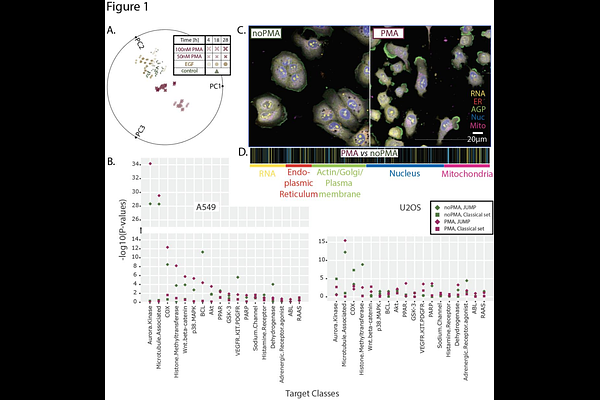Cell Painting in activated cells illuminates phenotypic dark space and uncovers novel drug mechanisms of action.

Cell Painting in activated cells illuminates phenotypic dark space and uncovers novel drug mechanisms of action.
Zietek, M.; Lohith, A.; Terciano, D.; Rabbitts, B.; Khadilkar, A.; MacMillan, J.; Lokey, S.
AbstractAs drug and natural product libraries expand, assays for assessing mechanisms of action (MoA) are increasingly critical. Performing cytological profiling using the Cell Painting (CP) assay enables image-based profiling of cellular states upon treatment, yet many bioactive compounds remain uncharacterized due to undetectable cellular effects under standard conditions. To address this, we combined drug dosing with cell activation using the protein kinase C (PKC) agonist phorbol myristate acetate (PMA). Profiling A549 lung cancer cells treated with 8,387 compounds at two concentrations (1 and 10 M) in both resting and PMA-activated states allowed us to detect phenotypic effects for up to 40% of all screened compounds, effectively illuminating new phenotypic \'dark space\'. Over 1,000 compounds exhibited phenotypes exclusively under PMA activation, establishing its advantage for MoA studies. We introduce novel quality control measures for CP screens and demonstrate that integrating phenotypic signatures enhances MoA discovery. Notably, 2-methoxycinnamaldehyde clustered with glucocorticoid receptor modulators and induced nuclear translocation, emphasizing the power of this approach in uncovering novel drug mechanisms and, therefore, aiding in improving therapeutic strategies.